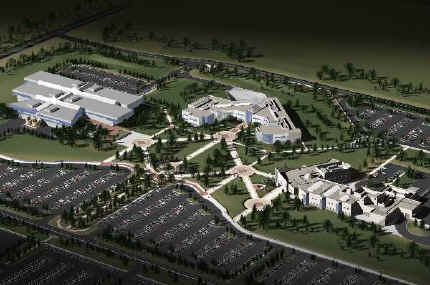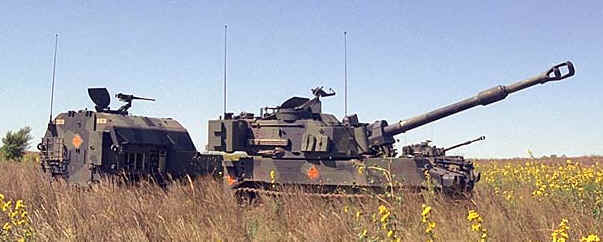Civilian leaders realize the US Army must reorganize to become more flexible and mobile. Too much of the Army's logistical elements are in the reserves making even minor operations impossible without mobilization. For example, the Army relies of reserve units for 100% of its water supply battalions, 97% of its civil affairs force, and 81% of its psychological operations units. In addition, the Army just agreed to provide 1900 more soldiers to the Special Operations Command, and recently rated most of its TRADOC training units C-4 (e.g. dysfunctional) due to manpower shortages.
Generals prefer a manpower increase, but recent pay raises have caused personnel costs to soar, so civilian leaders are demanding the Army make cuts. One option under consideration is to reduce Army forces in Germany and Korea. This can eliminate several bases and free thousands of soldiers and civilians for duty elsewhere. That is a political decision which may take some time. Meanwhile, the Army can quickly eliminate these unneeded units:
Disband the Army Space Command
The Army's Space and Missile Command has existed
for years. It is headquartered in the Washington DC area with branches in
Huntsville, White Sands, and Fort Greely. A few years ago, the Army decided it needed a separate
"Space" command, and just finished a huge command campus at Peterson
AFB in Colorado. (below) It's difficult to determine what this new command
"commands", other than some "space" units who do
little. Apparently, the Army feels it needs a "component
commander" for the new joint Strategic Command, although it has no real
business there. Rather than just assigning a Colonel as a liaison, a new Army bureaucracy has emerged. 
This is not sarcasm, just read though their website. At best they produce "space" officers for joint commands to duplicate Navy and Air Force officers who have legitimate space missions. Keep in mind the Army also has a Communications and Electronics Command, which controls Army satellite communications. The Army should disband the Space Command tomorrow, so the only problem is what to do with its new multi-million dollar palace in Colorado. This will free several hundred soldiers and civilians for duty in the real Army and save millions of dollars in annual operating costs.
Disband US Army South Headquarters
This "component command headquarters" spun off from the Southern Command when it moved from Panama to Miami a decade ago. It has no real function as it drifted to Fort Buchanan in Puerto Rico, then to Fort Sam Houston in San Antonio. It just passes messages from the Southern Command headquarters to a few minor Army units and wastes money as its officers travel around. Disband this headquarters and send its General, his aide, and staff secretary to Miami to free 300 personnel for duty elsewhere.
Disband 3rd Army Headquarters
The Army no longer needs a triangular command structure from the days of foot messengers, so it can "flatten" its structure by eliminating layers of command. Third Army headquarters is another pointless "component command headquarters" in Georgia for the Central Command based in Florida. An "Army" headquarters is supposed to command two or more Corps. However, modern communications allow Unified commands to easily communicate directly with Corps headquarters, and even division headquarters for that matter. In General Schwarzkopf's book "It Doesn't Take a Hero", he describes the constant problem of attempting to communicate through layers of command, so he often bypassed 3rd Army headquarters and even his Corps headquarters to communicate directly with field commanders.
Some may argue that 3rd Army headquarters is an alternate for the Central command. If true, it should become CENTCOM-Forward with joint personnel and based in Florida or Qatar. Meanwhile, disband Third Army headquarters and send its General, his aide, and staff secretary to join the Central Command in Tampa to free hundreds of personnel for duty elsewhere.
Merge US Army Pacific Headquarters
Army forces in Korea are commanded by a four-star General. Army units elsewhere in the Pacific Theater include one infantry brigade in Alaska, two infantry brigades in Hawaii, and a Special Forces battalion on Okinawa. For odd historical reasons, each of these units is "commanded" by another headquarters layer with a General officer and staff. US Army Japan Headquarters and US Army Alaska Headquarters are unneeded organizations "commanded" by US Army Pacific from its 2000 man resort in Hawaii. The Army should disband these two commands and trim back the Pacific staff in Hawaii, ideally moving them to Schofield Barracks and closing Fort Shafter.
Embed Division Artillery Headquarters
Outsiders assume that "division artillery" is part of division headquarters. In reality, it's an independent headquarters with hundreds of soldiers so that artillery colonels can have their own "command". Artillery battalion commanders need someone to write their evals, but a division does not need a layer of command to coordinate the assignment of artillery battalions. Therefore, embed the division artillery headquarters into each division G-3 to shed hundreds of soldiers. A division "artillery colonel" can act as a liaison and travel between battalions and division headquarters to resolve problems, while the G-3 section attaches artillery battalions where they are needed.
Cut Two Artillery Brigades
Massed artillery fire is a legacy of previous wars. The Army no longer needs numerous artillery brigades to fight the Soviets, especially since it has plenty of National Guard artillery brigades available. Corps artillery units are the last to deploy, allowing ample training time for reservists. Artillery is still vital, but the Army has far more heavy firepower than it needs for current threats. Moreover, its supply system is too limited to support newer rapid fire guns. After six months of build up for the 1991 Gulf war, artillery units were still rationed ammo. In addition, the Army deployed just two of its sixteen National Guard artillery brigades to Saudi Arabia.
Each Army division has its own "brigade" of artillery for direct support. In addition, the active Army has six artillery brigades as part of its four Corps headquarters for general support. V Corps and XVIII Corps have one artillery brigade, while I Corps has none. However, III Corps in Oklahoma has FOUR artillery brigades. The Army should designate one active artillery brigade for each Corps and attach several National Guard artillery brigades. This allows two artillery brigades at Fort Sill to be disbanded, while a third may move westward to join I Corps so it can rapidly deploy to the Pacific. Congressmen around Fort Sill will scream at the prospect of losing soldiers. However, Fort Sill is an outstanding training base, while other Army forts are overcrowded. Therefore, it should gain some units during the 2005 base closure and realignment round.
Just Do It
Eliminating these surplus units will save the Army a billion dollars a year and free thousands of soldiers and civilians for duty elsewhere. Unfortunately, the US Army is one of America's most powerful political machines which wants more active duty soldiers. The Association of the US Army spends $20 million dollars a year to influence elected officials. Generals are master politicians and experts at bureaucratic delay. When the Army was ordered to deactivate two divisions in 1993, it stalled for two years while its political machine fought the change. Civilian leaders must quickly force change before political fighting stalls the process and order these units disbanded within 90 days. Personnel and equipment can be shifted to units at their same base until absorbed into shorthanded Army units elsewhere. Generals will complain at the suddenness, but must be told "Just Do It", and it will happen.
Carlton Meyer editorG2mil@Gmail.com
©2003 www.G2mil.com